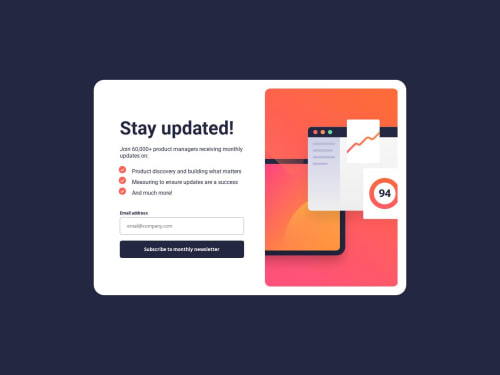Submitted almost 2 years agoA solution to the Newsletter sign-up form with success message challenge
Responsive landing page using CSS Grid
@pauleenann

Solution retrospective
What are you most proud of, and what would you do differently next time?
What can I do to improve my coding skills? can i use bootstrap for this?
What challenges did you encounter, and how did you overcome them?I had a hard time making this site responsive because of CSS Grid.
What specific areas of your project would you like help with?can you help me check if my the way I style this site is correct?
Code
Loading...
Please log in to post a comment
Log in with GitHubCommunity feedback
No feedback yet. Be the first to give feedback on pauleenann's solution.
Join our Discord community
Join thousands of Frontend Mentor community members taking the challenges, sharing resources, helping each other, and chatting about all things front-end!
Join our Discord